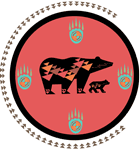We discussed previously some of the considerations related to sovereignty that researchers need to address. However, there are many varieties of permissions, institution-based and community-based, that researchers might need to consider. Seeking permission provides an avenue for demonstrating respect for a community and for its members. This is acutely true for the community-based research/evaluation, in which the community has experienced research exploitation and in which the researcher plans to work directly with members of the community. As noted in the "Reciprocity" section, the academic researcher's orientation to research ethics that only centers informed consent is not enough to build a reciprocal and consensual research relationship with Indigenous peoples and communities. Consequently, the obligations on researchers to pursue community-based permissions are at least as strong (if not stronger than) the obligations on researchers to pursue institution-based (e.g., Tribal Research Review Board or Tribal Institutional Review Board) permissions.
Please keep in mind that each community is likely to be different, and so any discussion here is illustrative rather than a definitive guide. Researchers should be prepared to figure out what they need to navigate well ahead of time, since they might find the processes more complex than they had originally thought.
There are a few varieties of institution-based permission that may be necessary, depending on the community they are working with and the type of research they are doing. Tribal governments may need to approve research, whether through a Tribal council or an institutional review board (IRB). Participants will need to offer informed consent. Any facilities also will likely need to give permission as well.
To understand the potential complexity here, consider what might be a relatively simple question: Who needs to approve the research I'm doing? There are a number of different approval channels researchers should explore. For example, the Tribal Council or Chairperson may require a Tribal resolution (a legislative mechanism used to express a Tribe's position on federal, state, local, or Tribal issues) authorizing the proposed research project. In addition, some Tribes may have a local Tribal Research Review Board (TRRB) that reviews proposed research projects involving the community. TRRBs are more common than Tribal IRBs and serve as delegates of Tribal councils in dealing with research. However, TRRBs are not IRBs, and the Tribe may require approval from an IRB for work to proceed. Some Tribes have their own HHS-registered Tribal IRBs. Researchers using data or personnel from the Indian Health Service (IHS) will also need IHS IRB approval—and they may still need separate approval from the Tribe. The Indian Health Service maintains a list of IHS and Tribal IRBs that can be found at: https://www.ihs.gov/dper/research/hsrp/instreviewboards. For more information about human subject research protections at the IHS, see https://www.ihs.gov/dper/research/hsrp.
- Researchers should also seek other forms of community-based permissions. For example, the Native American Center for Excellence (NACE) suggests that researchers get "to know the tribal communities and establish relationships early on with elders and spiritual leaders who can serve as mentors, guides, and facilitators throughout the evaluation. ("Steps for Conducting Research and Evaluation in Native Communities," p. 1). This is essential both because elders and spiritual leaders are community knowledge bearers and because cultivating these relationships can help create and reinforce a sense of reciprocity between the researchers and the community resulting in better outcomes.
- For these community-based permissions, it will be important to practice ongoing consent—that is, treat "getting consent from subjects" not as satisfied by a one-time action at the beginning of research (e.g., as informed consent forms signed by subjects), but rather in terms of conducting ongoing check-ins with people to ensure that they remain both informed and consenting.
- It is also important for researchers to remember that norms regarding recordings (broadly construed to include photography and videography), intellectual property (particularly copyright), and even occupying space (some of which may be sacred) might be different than what researchers are familiar with. Indeed, they may differ by community. The relationship between documentary efforts and AI/AN populations is one fraught with the same concerns about colonialism that infect Western inquiry in Indian Country. (See, for example, https://wellcomecollection.org/articles/WrUTGh8AACAA1FH8.) Researchers will want to inquire about what they can record and what places might be off limits. Some Tribes provide high-level guidance online; for examples, see the websites of the Quileute Tribe https://quileutenation.org/indian-country-etiquette and the Squaxin Island Tribe https://squaxinisland.org/visitors/native-american-etiquette.
Resources
- Native American Center for Excellence. (n.d.). Steps for conducting research and evaluation in Native communities. Retrieved from: https://www.samhsa.gov/sites/default/files/nace-steps-conducting-research-evaluation-native-communities.pdf
- NCAI Policy Research Center and MSU Center for Native Health Partnerships. (2012). 'Walk softly and listen carefully': Building research relationships with tribal communities. Washington, DC, and Bozeman, MT: Authors. Retrieved from: https://www.ncai.org/attachments/PolicyPaper_SpMCHTcjxRRjMEjDnPmesENPzjHTwhOlOWxlWOIWdSrykJuQggG_NCAI-WalkSoftly.pdf


